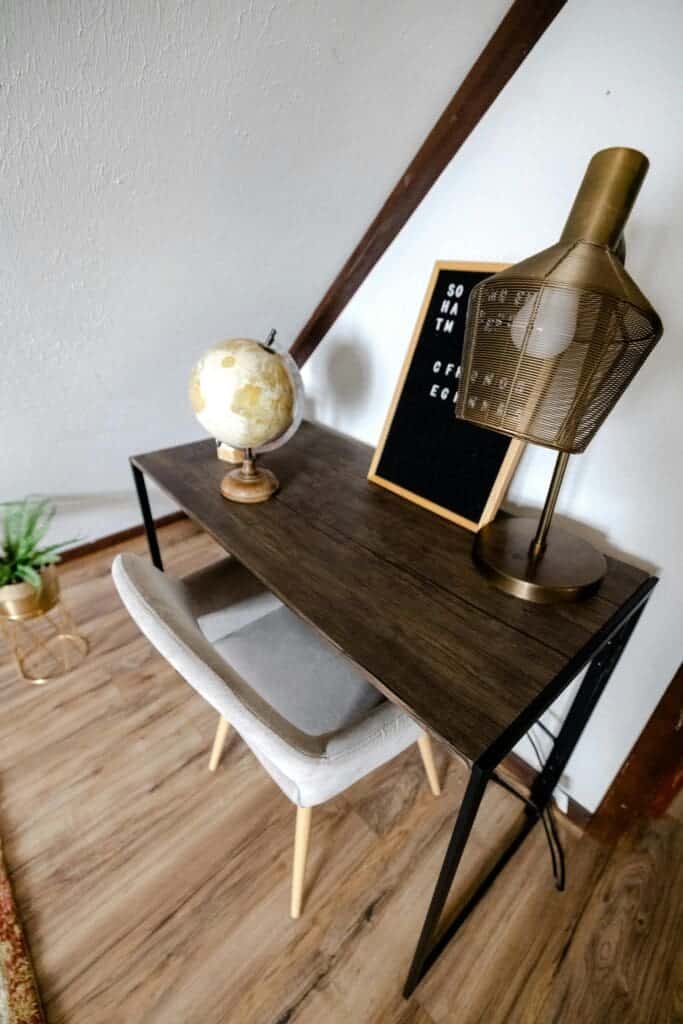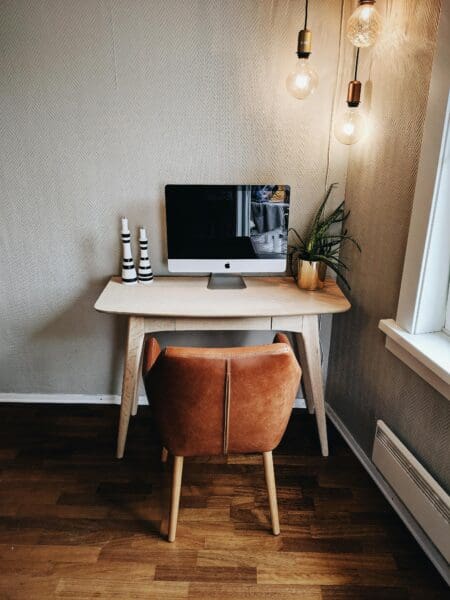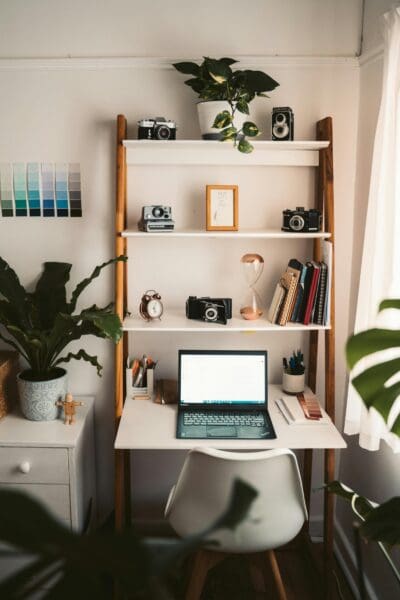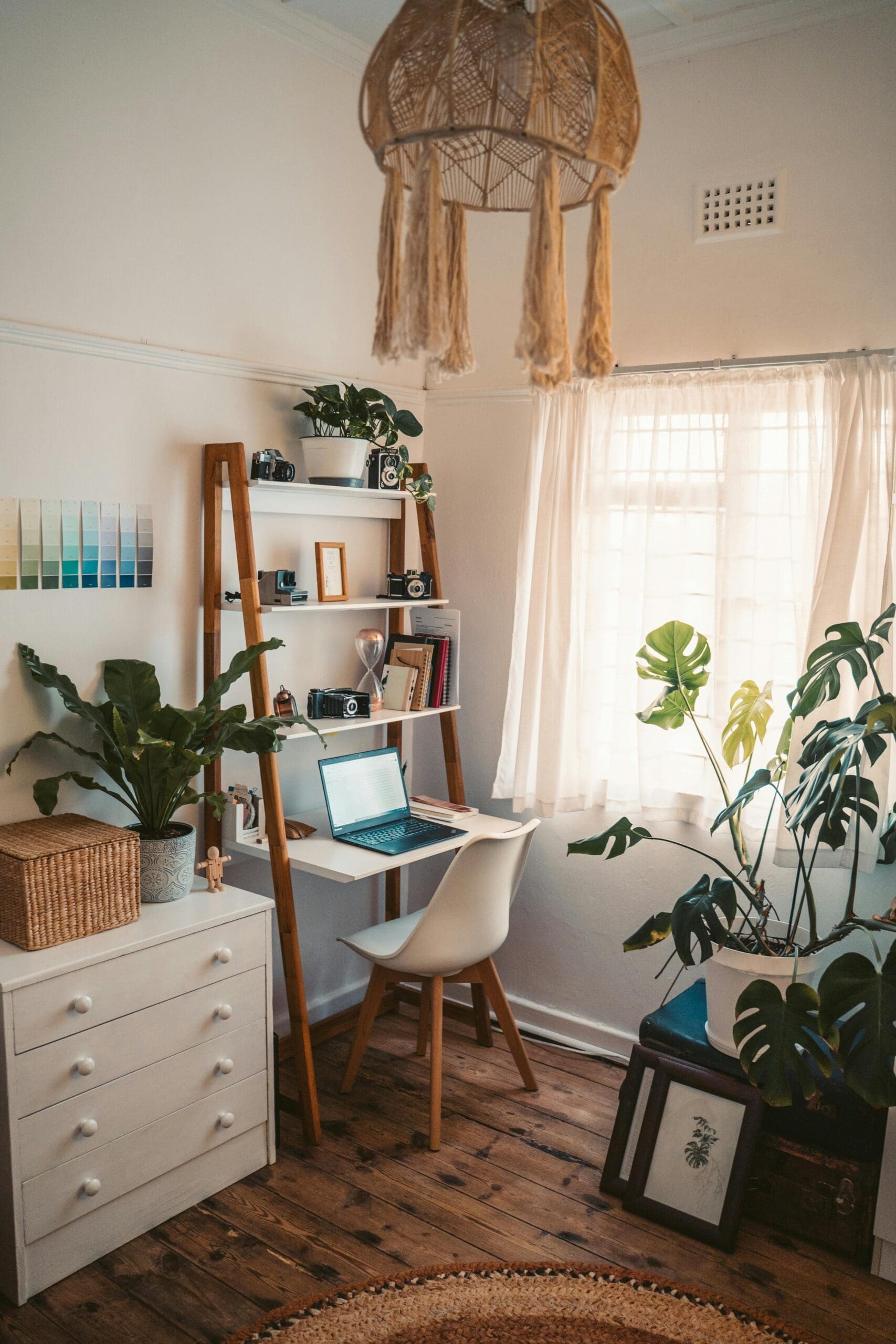Your Bedroom as a Dual-Purpose Home Office
Are you working from home and have a spare bedroom, but also need home office space? Then this is for you.
As working from home continues to rise, having a functional and dedicated home office setup is more important than ever. A 2021 survey by Upwork projected that 36.2 million Americans will be working remotely by 2025, an 87% increase from pre-pandemic levels. With this shift toward long-term work-from-home arrangements, creating an ideal home office setup is essential for maintaining both productivity and work-life balance.
If you’re working with limited space, don’t worry, your bedroom can do double duty. Converting it into a dual-purpose home office is a smart and stylish solution that supports your professional needs without sacrificing comfort. In this post, we’ll share three practical ways to transform your bedroom into a functional, well-designed workspace that enhances focus, creativity, and daily efficiency.

Affiliate links are in this post, more information in disclaimer
Understanding the Need for a Dual-Purpose Home Office
As more people embrace remote and hybrid work, the need for a dedicated workspace at home grows. A study by Buffer found that 22% of remote workers struggle with unplugging after work. A designated home office setup can help create boundaries between work and personal life. However, not everyone has the luxury of a spare room. That’s where the concept of a dual-purpose space comes in, allowing you to maximise your existing bedroom’s potential.
Benefits of a Dual-Purpose Bedroom Office
Creating a dual-purpose bedroom home office offers several advantages:
- Space Optimisation: Utilise existing space effectively without additional construction or relocation.
- Cost Savings: Avoid the expenses associated with renting or modifying a separate workspace.
- Increased Productivity: A well-designed workspace can boost focus and efficiency.
- Life-Work Balance: Establish clear boundaries between work and relaxation by creating a distinct office area.
1. Planning Your Dual-Purpose Bedroom Office
Assessing Your Space and Needs
Before diving into the transformation, assess your bedroom to determine how much space you can allocate for a home office setup. Consider the following:
- Room Layout: Identify any underutilised corners or wall space that can be repurposed.
- Natural Lighting: Position your desk near a window to take advantage of natural light, which can improve mood and productivity.
- Storage Requirements: Determine how much storage space you need for office supplies and materials.

Choosing the Right Furniture
Selecting appropriate furniture is crucial to creating a functional and comfortable workspace. Consider the following options:
- Compact Desks: Opt for a desk that fits your space without overwhelming the room. Wall-mounted or foldable desks are excellent choices for small spaces.
- Ergonomic Chairs: Invest in a chair that provides adequate back support and comfort for extended periods of sitting.
- Multi-Functional Furniture: Look for furniture that serves multiple purposes, such as a bed with built-in storage or a bookshelf that doubles as a room divider.
Having a dual-purpose home office can still mean comfort; Ultimate Guide to Creating an Ergonomic Home Office
2. Designing Your Dual-Purpose Home Office
Creating a Cohesive Aesthetic
Maintaining a cohesive aesthetic between your bedroom and home office area is key to achieving a harmonious dual-purpose space. Here are some design tips:
- Colour Palette: Choose a neutral colour palette that complements both areas. Soft hues like beige, grey, or pastels can create a calming atmosphere.
- Decorative Elements: Use decorative elements such as artwork, plants, or rugs to tie the spaces together visually.
- Lighting: Incorporate layered lighting with a mix of ambient, task, and accent lighting to create a dynamic and functional environment.
Maximising Storage Solutions
Efficient storage solutions are essential for maintaining a clutter-free workspace. Consider these storage ideas:
- Vertical Storage: Use vertical space by installing shelves or pegboards to store office supplies and personal items.
- Hidden Storage: Choose furniture with hidden storage compartments, such as ottomans or under-bed drawers.
- Organisational Tools: Utilise desk organisers, file holders, and cable management solutions to keep your workspace tidy.

3. Implementing Practical Tips for a Functional Home Office
Establishing Boundaries
Setting clear boundaries between work and personal life is crucial when your workspace is in your bedroom. Here are some strategies to help with that separation:
- Visual Separation: Use a room divider or curtain to create a physical barrier between your office and sleeping areas.
- Work Schedule: Set specific work hours and stick to them to maintain a healthy routine.
- End-of-Day Ritual: Develop a ritual to signal the end of your workday, such as turning off your computer or tidying your desk.
Incorporating Personal Touches
Your dual-purpose bedroom home office should reflect your personality and preferences. Consider adding personal touches to make the space your own:
- Personal Decor: Display personal items, such as photos or souvenirs, that inspire and motivate you.
- Comfort Items: Include comfort items like a cozy throw blanket or scented candles to create a welcoming atmosphere.
- Greenery: Incorporate plants to improve air quality and add a touch of nature to your workspace.
Get Indoor plants into your home office now: Why Indoor Plants in Your Home Office are Great for Well-Being

Embrace the Dual-Purpose Lifestyle
Transforming your bedroom into a dual-purpose home office is a practical and stylish solution for remote work. By understanding your space and needs, choosing the right furniture, and implementing thoughtful design elements, you can create a functional and inspiring workspace that enhances both productivity and relaxation. Remember, the key to a successful dual-purpose space is balance, so be sure to establish boundaries and add personal touches that reflect your unique style. Embrace the flexibility and convenience of a bedroom office, and unlock the full potential of your home.
For more WFH nspiration and design tips, visit our blog regularly. Whether you’re a remote work veteran or new to the home office lifestyle, our resources will help you create a space that supports your professional and personal wellbeing.
This post contains Amazon affiliate links, which means I may earn a commission if you make a purchase through these links. Please note that I only recommend products that I believe will add value to my followers. Your support helps keep this content free. Thank you for your understanding and support, more information in Disclaimer!

